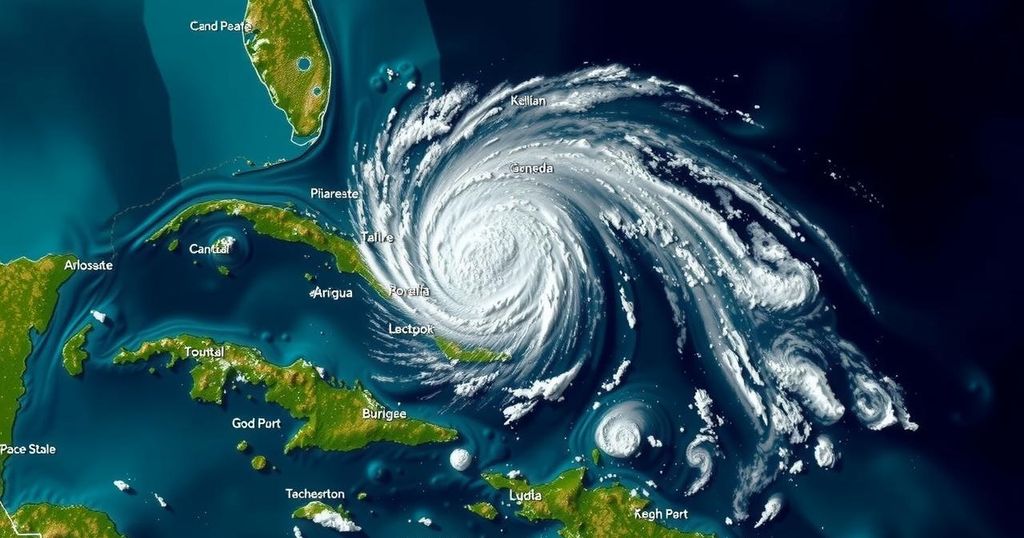Hurricane Rafael has intensified to a Category 3 storm with winds at 120 mph, moving west-southwest in the Gulf of Mexico. It is expected to weaken over time while the surrounding areas should prepare for hazardous surf conditions. The Atlantic hurricane season lasts until November 30.
Hurricane Rafael has intensified into a Category 3 storm with maximum sustained winds of 120 mph, according to the National Hurricane Center. The hurricane, currently located in the Gulf of Mexico, is expected to move west-southwest while gradually losing strength due to increasing wind shear. A trough of low pressure near Puerto Rico is producing heavy rain, although this system has a low likelihood of development. Following Rafael’s impact on Cuba, where it caused extensive power outages, forecasters indicate that the hurricane’s projected path will steer it away from Florida. Nevertheless, swells from Rafael may create hazardous surf and rip currents along the Gulf Coast. Residents in the southern Gulf of Mexico should stay updated on Rafael’s progress and potential impacts as the region monitors several other systems in the Atlantic.
The Atlantic hurricane season spans from June 1 to November 30, encompassing storms formed in the northern Atlantic Ocean, Caribbean Sea, and Gulf of Mexico. During this period, meteorological agencies such as the National Hurricane Center (NHC) track and monitor hurricane formation and paths, providing crucial updates to communities at risk. Current weather phenomena are also assessed, including troughs of low pressure, which might enhance storm development and precipitation across targeted areas. Rafael, in particular, has garnered attention due to its potential impacts on coastal regions and broader atmospheric conditions affecting storm behavior.
In summary, Hurricane Rafael is a powerful Category 3 storm currently affecting the Gulf of Mexico. Despite the hurricane’s strength, its predicted trajectory will likely spare Florida from major devastation, although the possibility of dangerous surf conditions remains. Local authorities and residents are encouraged to monitor ongoing updates and prepare for any eventualities as the season’s winds continue to shift. The Atlantic hurricane season remains active until the end of November and requires constant vigilance.
Original Source: www.timesreporter.com






